Pop Culture
Zendaya’s Techno Futuristic ‘Dune’ Premiere Look Reminded Us of These 5 Artworks
The Mugler ensemble is reminiscent of works by Ingres, Sorayama, and Koons.

The Mugler ensemble is reminiscent of works by Ingres, Sorayama, and Koons.

Verity Babbs

Zendaya wowed at the premiere of Dune: Part Two on February 15 in London, wearing a vintage Mugler silver cyborg suit with chest, stomach, thigh, and rear cutouts. The “Machinenmensch” piece was designed by Thierry Mugler and Jean-Jacques Urcun for the Fall/Winter collection of 1995. The actor’s stylist Law Roach paired the suit with silver gloves and a Bulgari necklace.
Zendaya is returning in her role as Chani in the movie adaptation of Frank Herbert’s Dune novels. While other A-list co-stars like Anya Taylor-Joy and Florence Pugh were praised for their looks, Zendaya’s futuristic outfit undoubtedly stole the show. But the actor’s cyborg style also reminded us of a few artworks, five of which we’ve noted below.
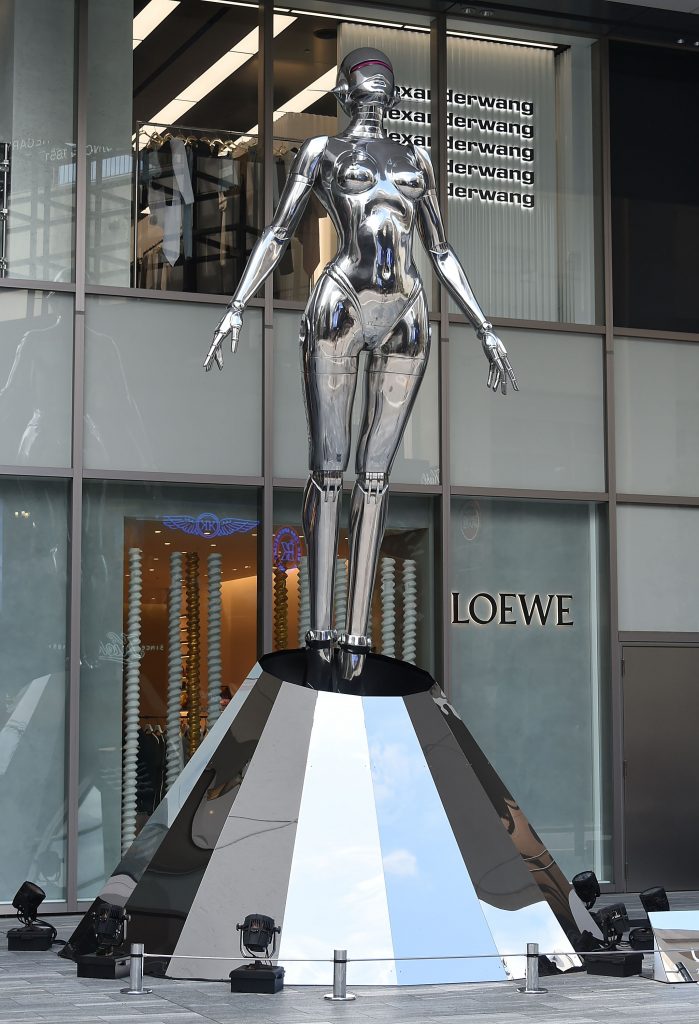
Hajime Sorayama’s Sexy Robot Floating installation floating in displayed at Shibuya Parco flagship store, in 2020 in Tokyo. Photograph by Jun Sato/WireImage.
The Japanese artist Hajime Sorayama is known for his sensual robot illustrations, which he has been creating since the 1980s for publications including Playboy. The seven-meter installation Sexy Robot Floating which was situated in an outdoor plaza of Tokyo’s Shibuya Parco shows one of Sorayama’s signature figures in flight. The artist and Zendaya have a shared appreciation for the futuristic, with more than a hint of Fritz Lang’s sci-fi silent film Metropolis (1923) evident in this aesthetic. Sorayama has previously collaborated with the fashion house that created Zendaya’s cyborg look, too. We hope this version won’t ruffle Sorayama’s feathers, because just three months ago the artist posted on Instagram, insinuating that Beyoncé had appropriated his designs, saying “I could make much better work for you”.
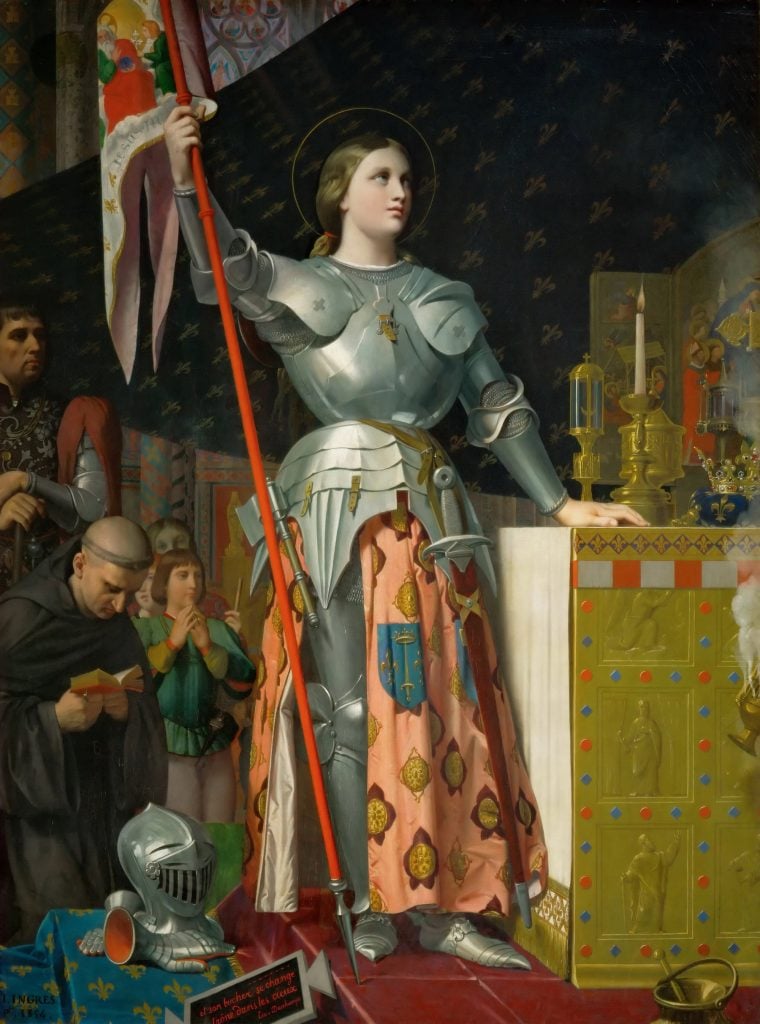
Jean-Auguste Dominique Ingres, Joan of Arc at the Coronation of Charles VII (1854).
This isn’t the first time that an outfit of Zendaya’s has been compared to the armored images of Joan of Arc. In 2018, the actress attended the Met Gala as the 15th-century French saint, dressed in a custom Versace gown, keeping with the evening’s “Heavenly Bodies: Fashion and the Catholic Imagination” theme. There is something armor-esque about her latest cyborg look, and we’d certainly follow her into battle over its merits. Zendaya’s red carpet style and this depiction of the saint by the French Neoclassical artist Jean-Auguste Dominique Ingre share a few more details, including hairstyling, here tied back, low down on the head, a look seems to be having a comeback following the dominance of the high-pony.
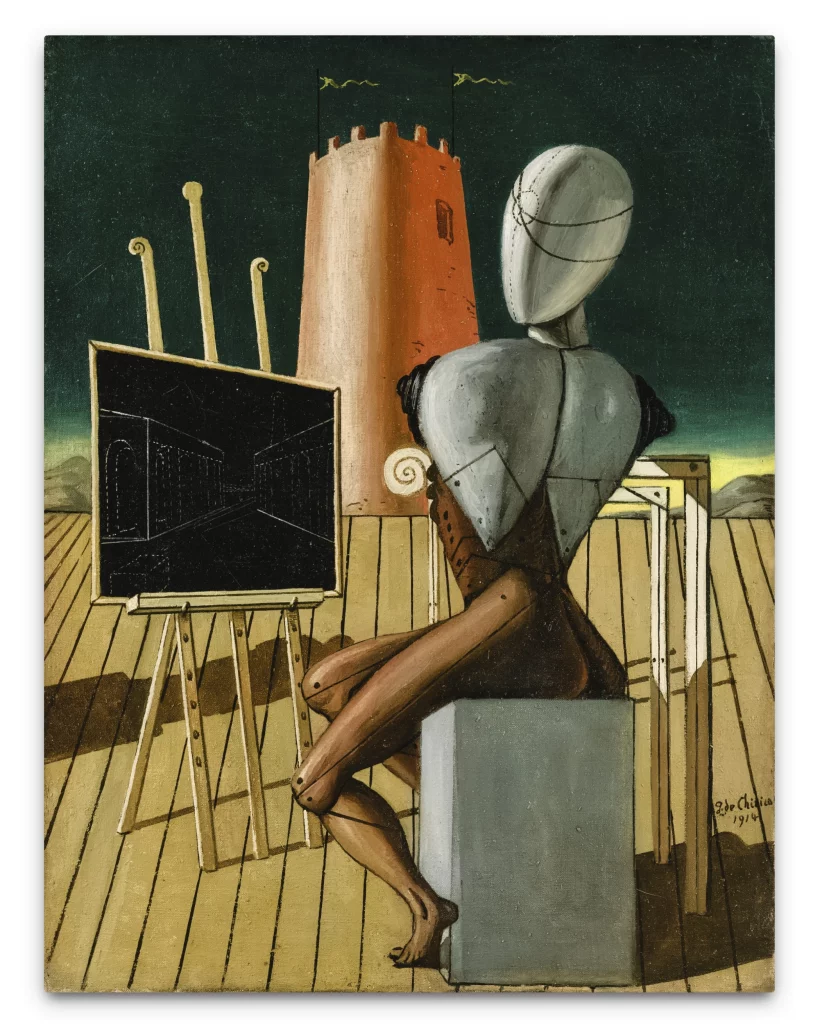
Giorgio de Chirico, Il vaticinatore (1914). Courtesy of Sotheby’s.
Sold at Sothebys in Paris in 2019, Giorgio de Chirico’s Il vaticinatore (meaning the fortune teller or prophesier) from 1914 is reminiscent of the snatched silhouette of the Dune 2 look, with a futuristic silver head and chest to boot. De Chirico was fascinated with the character of the fortune teller, and given how much the world looks to Zendaya for fashion inspiration, we think this might be a good character comparison, too. In the painting, one of De Chirico’s signature mannequins is sat in front of an easel, in the role of an artist. What is Zendaya, if not an artist?
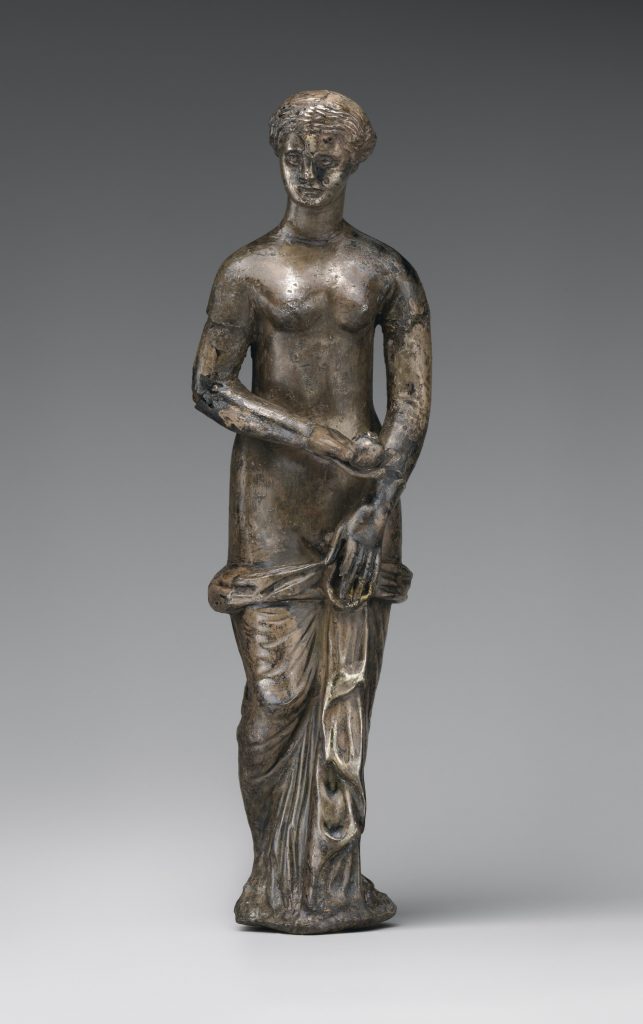
Silver Venus Statuette (1st–2nd Century C.E.). Image via the Metropolitan Museum of Art.
A goddess covered in silver—could there be a closer doppelgänger? This Roman silver statuette of Venus in the collection of the Metropolitan Museum of Art shines like Zendaya’s Mugler suit and celebrates the female form. In fact, it makes her outfit seem comparatively modest with its chest and rear cut-outs. While 1st– and 2nd-century bronze statuettes of the goddess of love were common, silver versions are much rarer. Luckily for us, sightings of Zendaya looking gorgeous are more frequent.
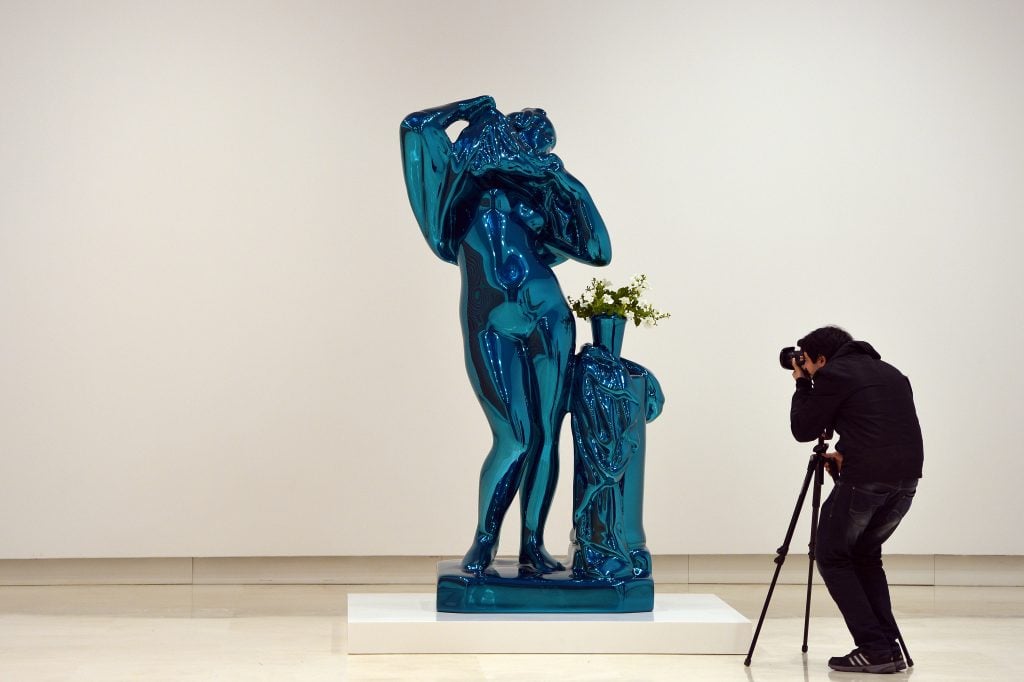
Jeff Koons’s Metallic Venus on view in “Empire State. New York art now” at the Palazzo delle Esposizioni, Rome, 2013. Photograph by Gabriel Bouys/AFP via Getty Images)
Another metallic Venus, but this time 2,000 years later. This sculpture by Jeff Koons is based on the lost Greek Aphrodite Kallipygos, made around 300 B.C.E. The sculpture’s title means “Aphrodite of the beautiful buttocks”. Zendaya’s outfit on February 15 proves that—just like the name of the sculpture that inspired Koons suggests—if you’ve got it, you should flaunt it.